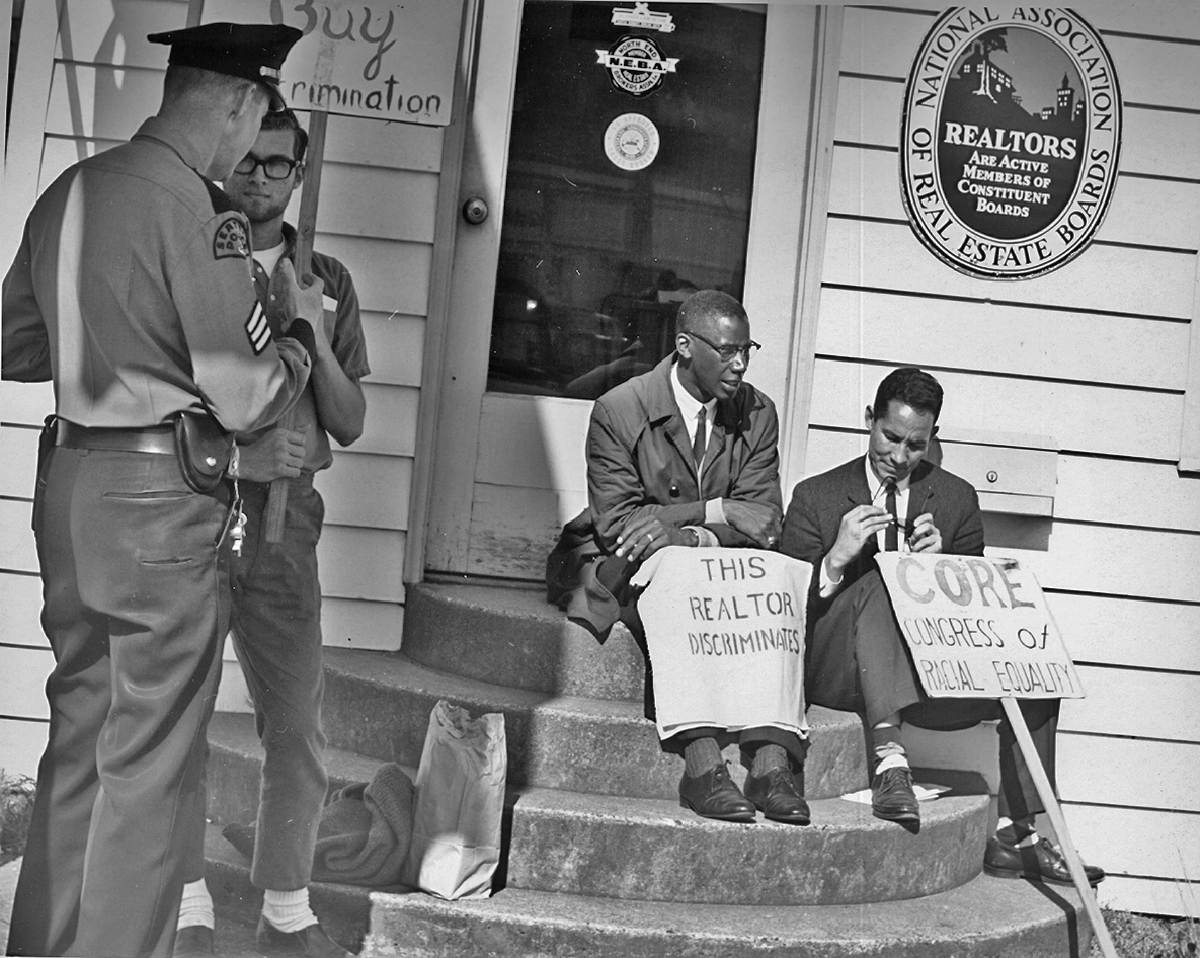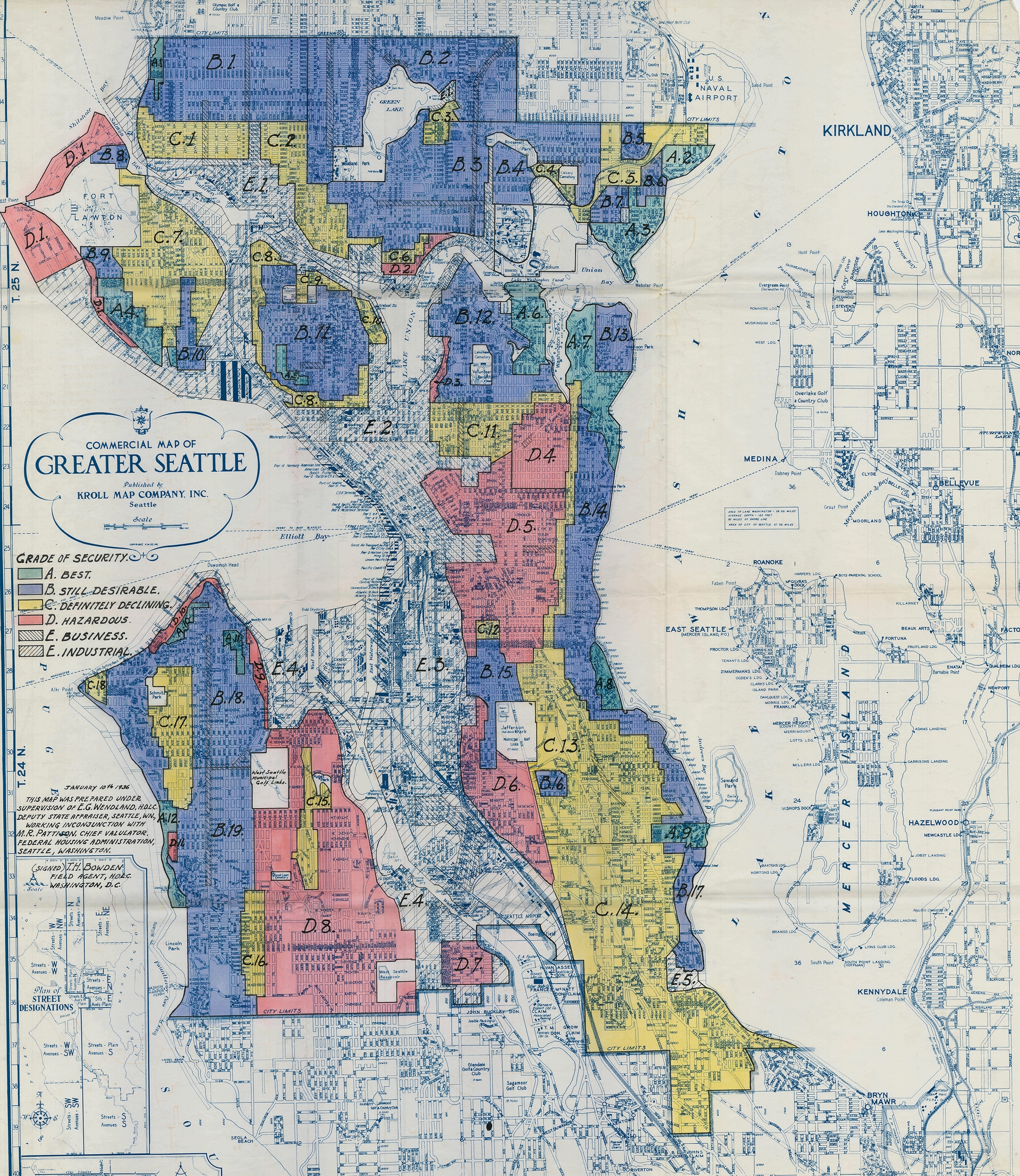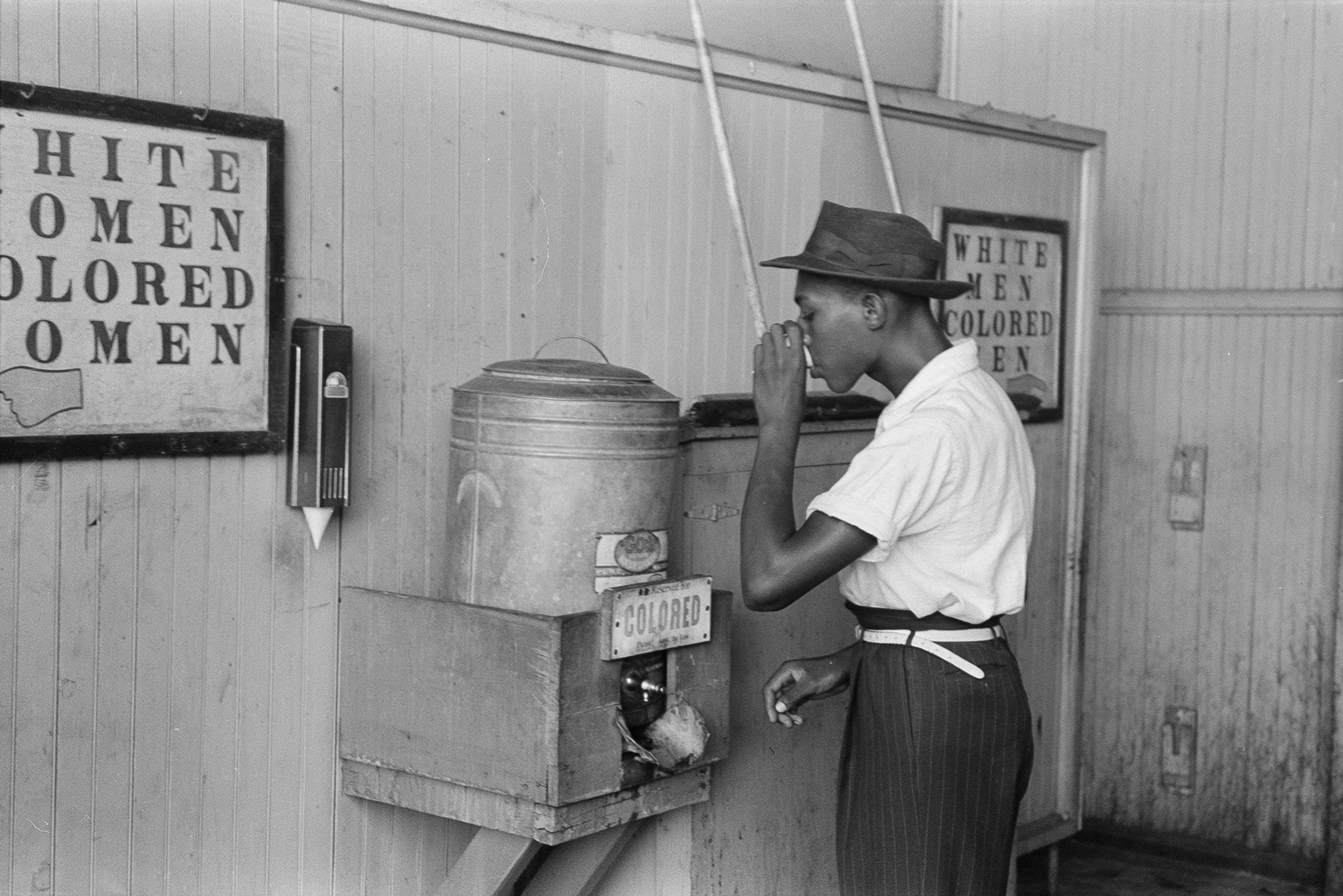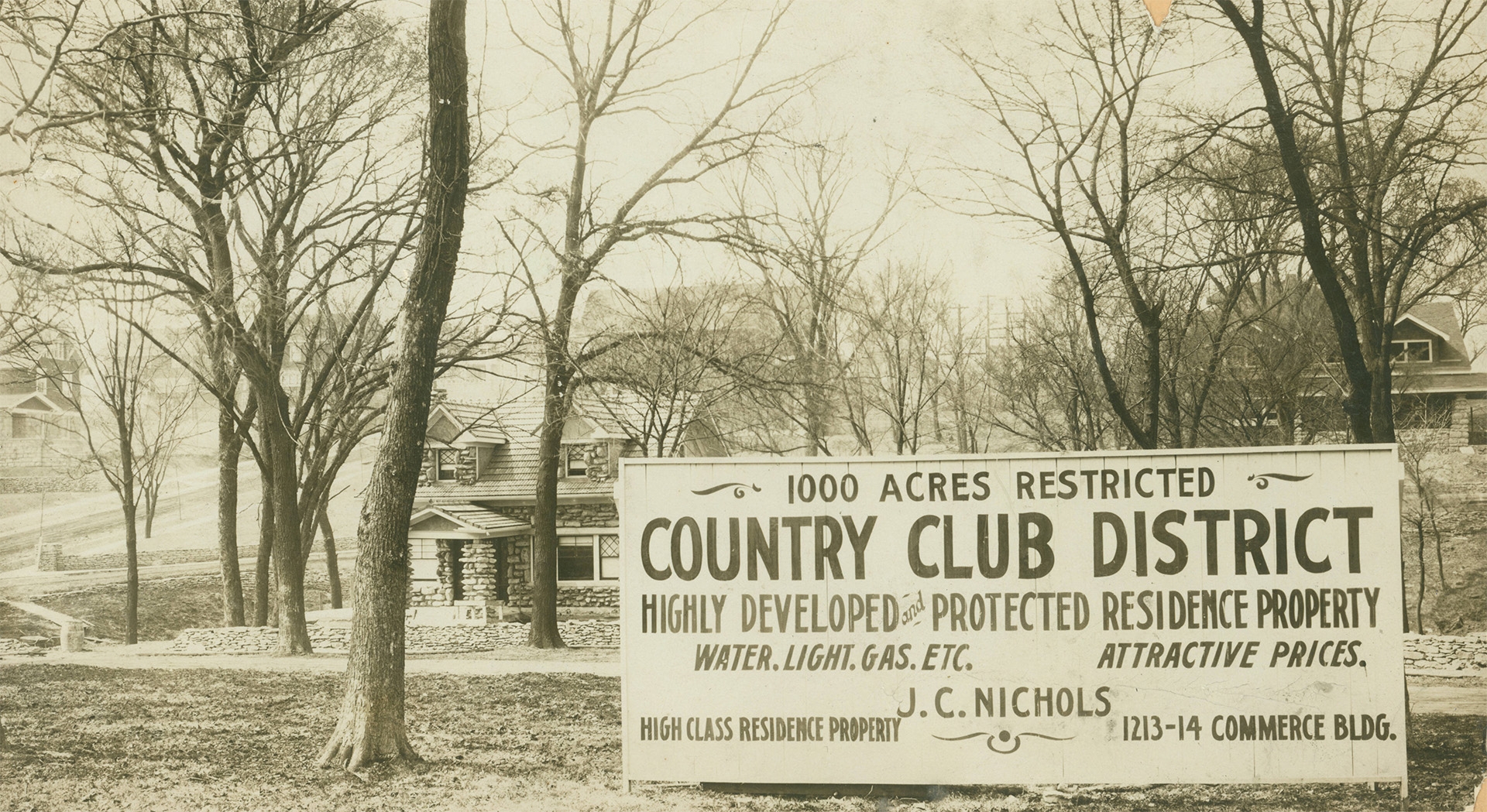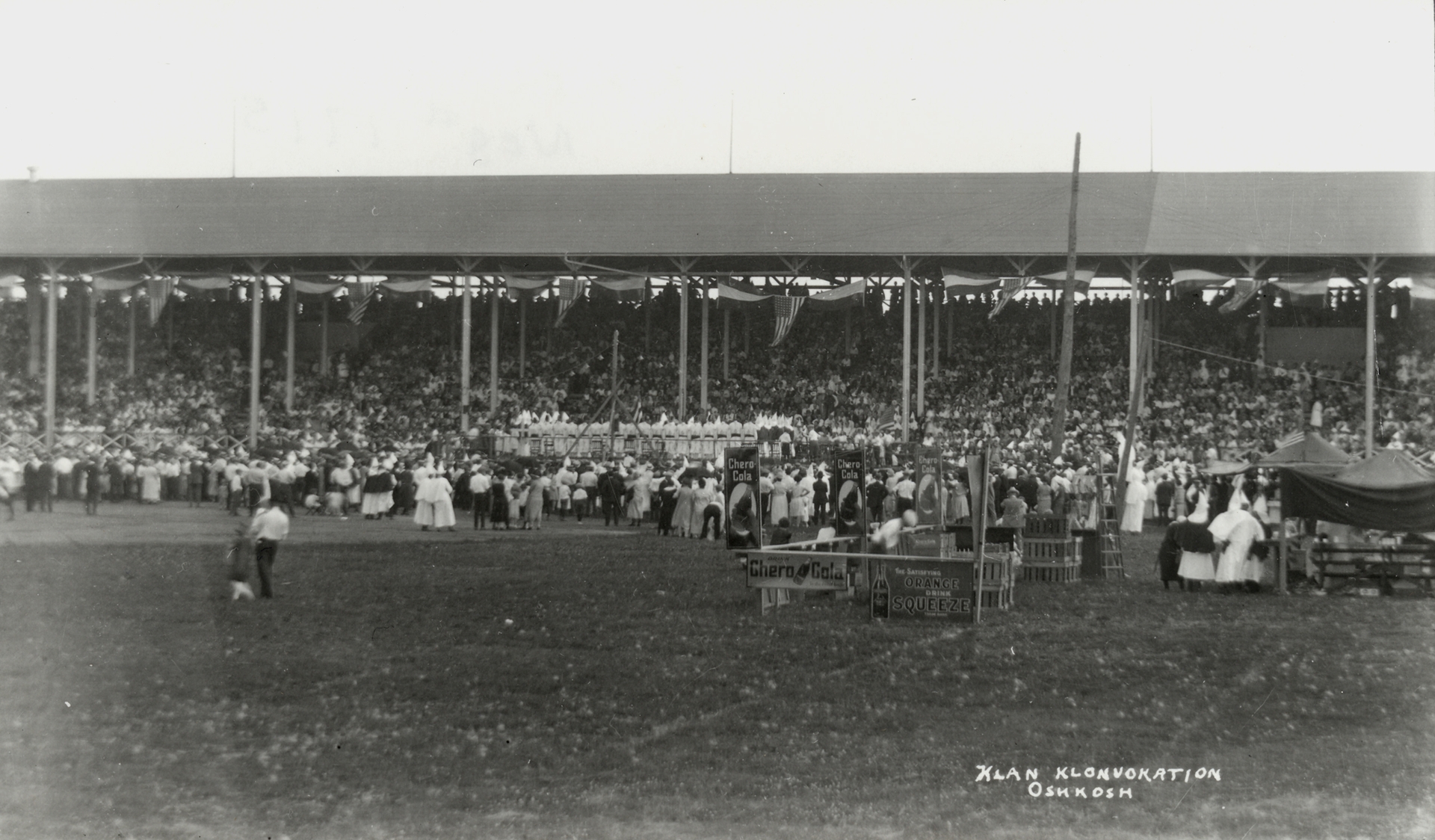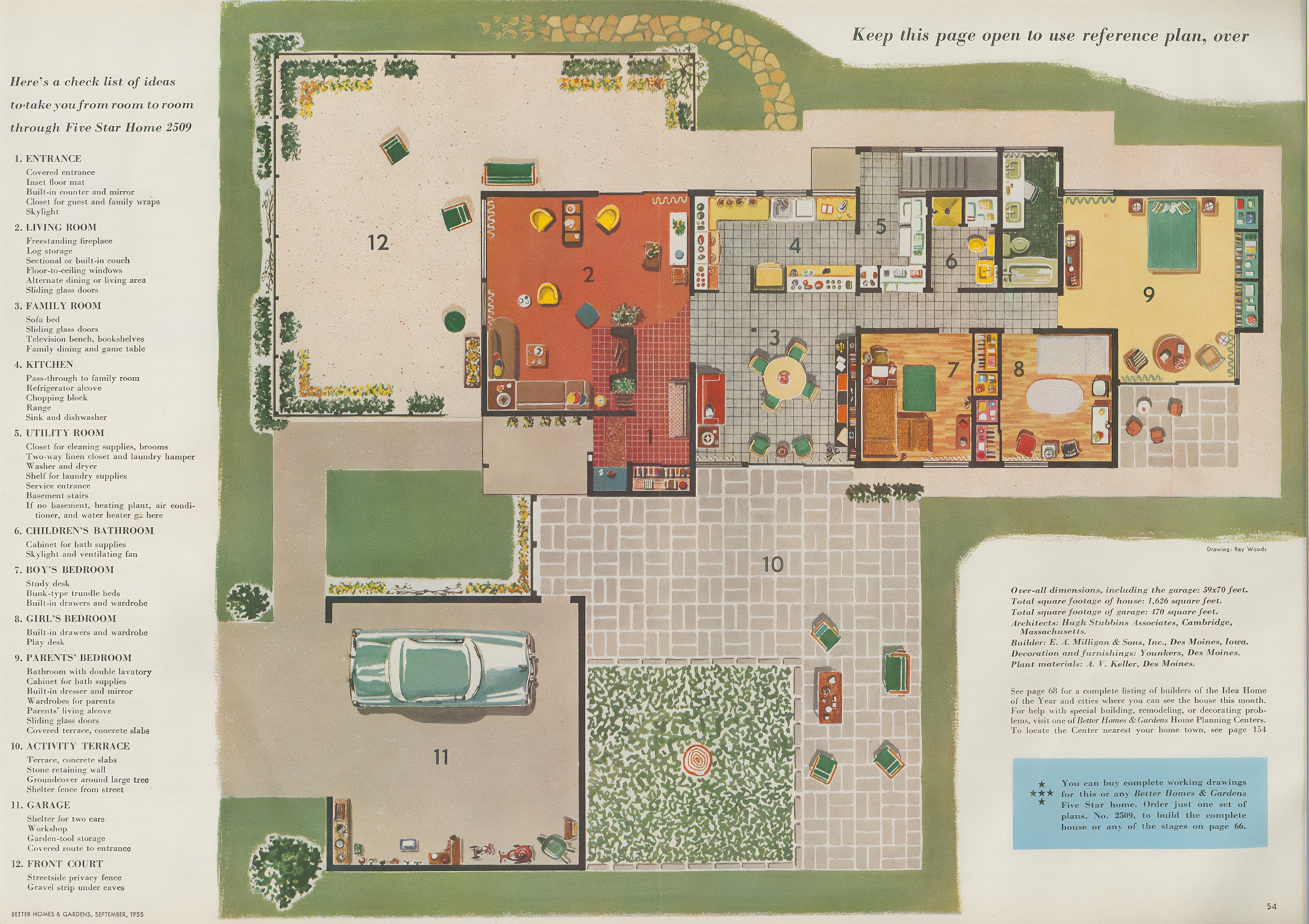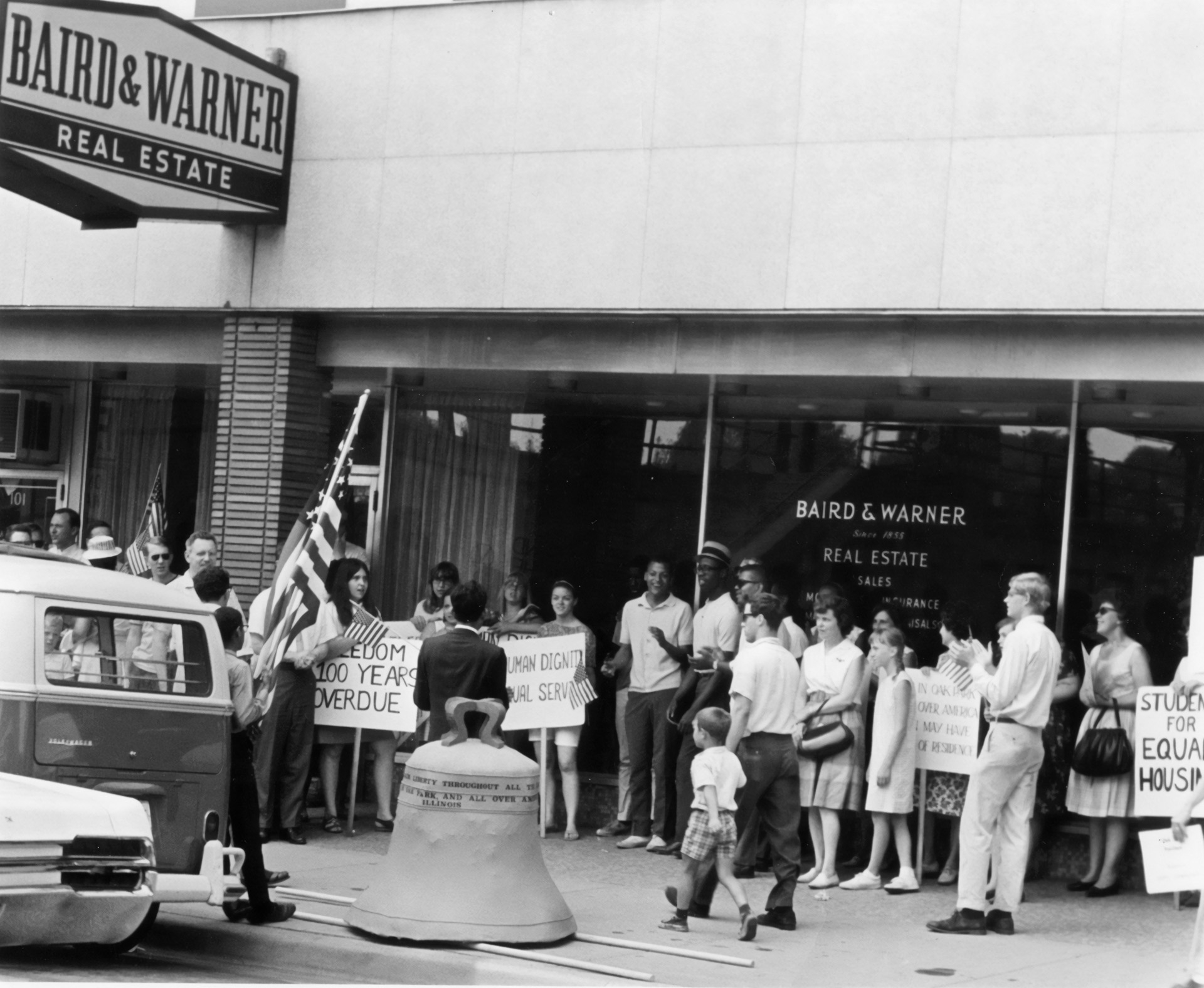Article 13
The Power of Law
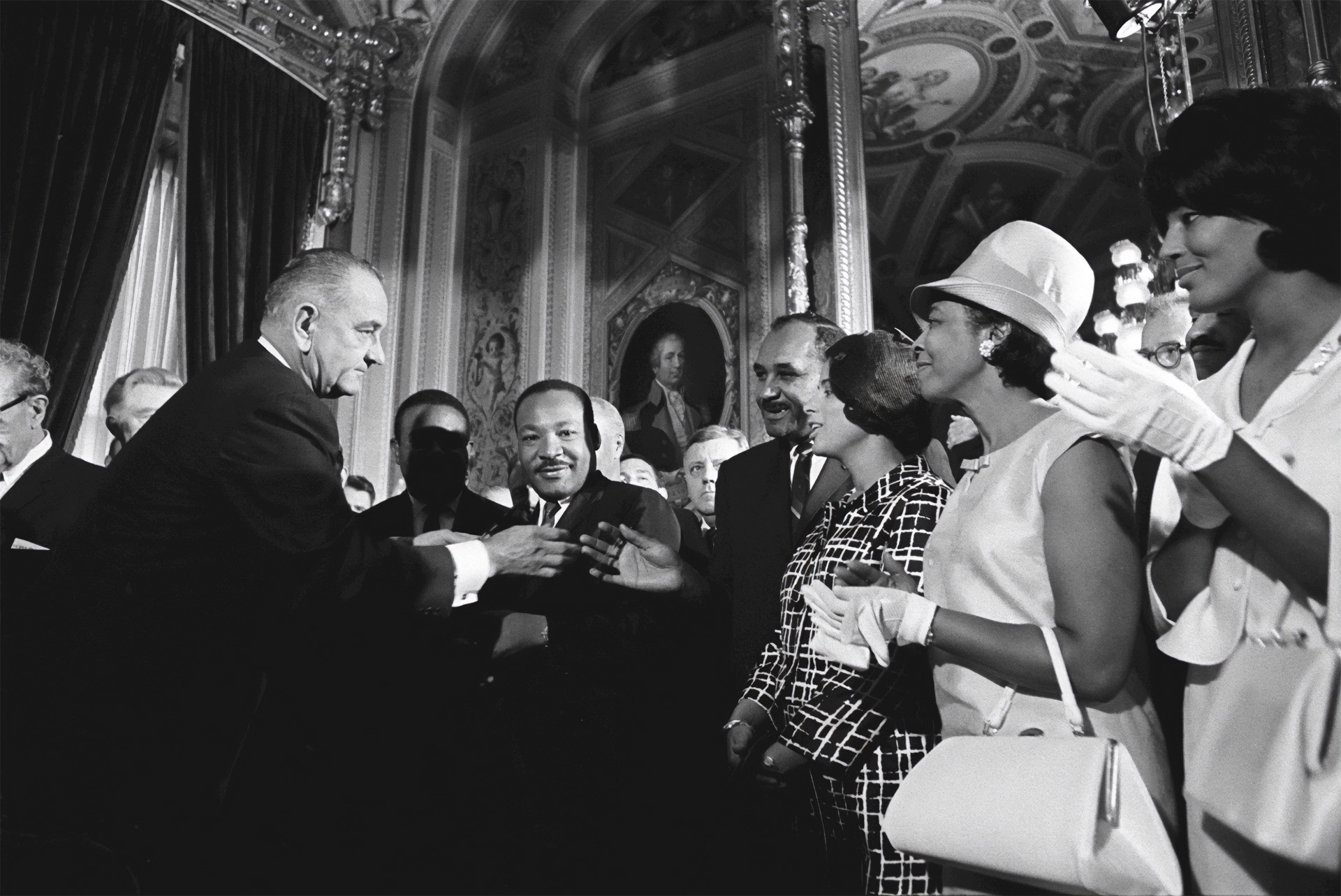
Courtesy of the LBJ Presidential Library
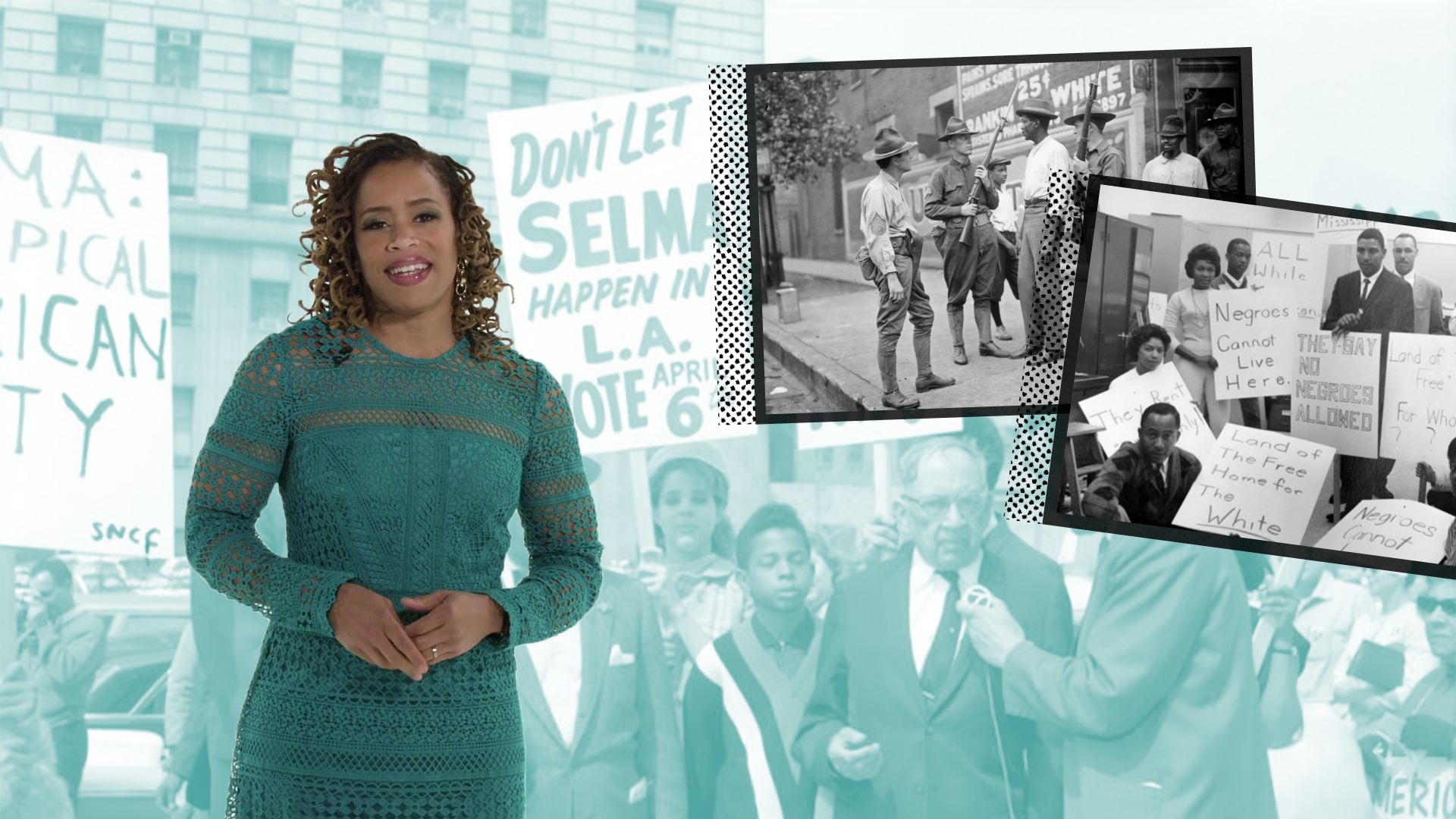
Challenging and Changing the Law
ViewHide Transcript
Housing was a key battleground for twentieth century civil rights organizers.
Activists won a victory in 1948, when the U.S. Supreme Court ruled in Shelley v. Kraemer that racial and religious restrictive covenants were legally unenforceable. But private covenants continued to be placed and appear on deeds.
In 1954, the U.S. Supreme Court handed down its landmark decision in Brown v. the Board of Education, declaring segregation and the doctrine of “separate but equal” unconstitutional.
The momentum continued to grow. After years of mass sit-ins, protests, and voter registration campaigns, activists won passage of the 1964 Civil Rights Act and the 1965 Voting Rights Act.
These were remarkable gains. But there was still much work to be done.
Civil rights activists turned their attention to the urban North—to the struggle for fair housing.
Encouraged by Chicago fair housing advocates, Dr. Martin Luther King, Jr. moved his family to Chicago’s West Side in 1966 to put a spotlight on housing inequality in one of America’s most segregated cities. It was the start of the Chicago Freedom Movement.
That summer, peaceful protesters marching in an all-White neighborhood were struck with bottles and bricks thrown by white mobs. Dr. King said the racist mobs in Chicago were more “hostile and hate-filled” than anything he had experienced in the South.
On July 10th, 1966—a day known as Freedom Sunday—King spoke to 30,000 people at Soldier Field. He connected impoverished slums with White flight to the suburbs.
The Chicago Freedom Movement helped build support for the passage of a Fair Housing Act. But the legislation stalled. Dr. King’s assassination in 1968 injected a new urgency and political will into the fight.
On April 11th, 1968, the Fair Housing Act was signed into law, prohibiting discrimination in home sales and rentals based on race, color, religion, or national origin. It was amended in 1974 to include sex, and again in 1988 to protect people with disabilities and families with children.
The Fair Housing Act was a major victory for the civil rights movement.
While progress has been made, many of the law’s promises have gone unfulfilled.
More than half a century later, there are still extreme racial disparities in homeownership. Thousands of housing discrimination complaints are filed every year.
The fight to integrate American neighborhoods continues.
What role do courts and policy makers play in housing discrimination?
Does law have the power to end discrimination?
What does success in fair housing look like?
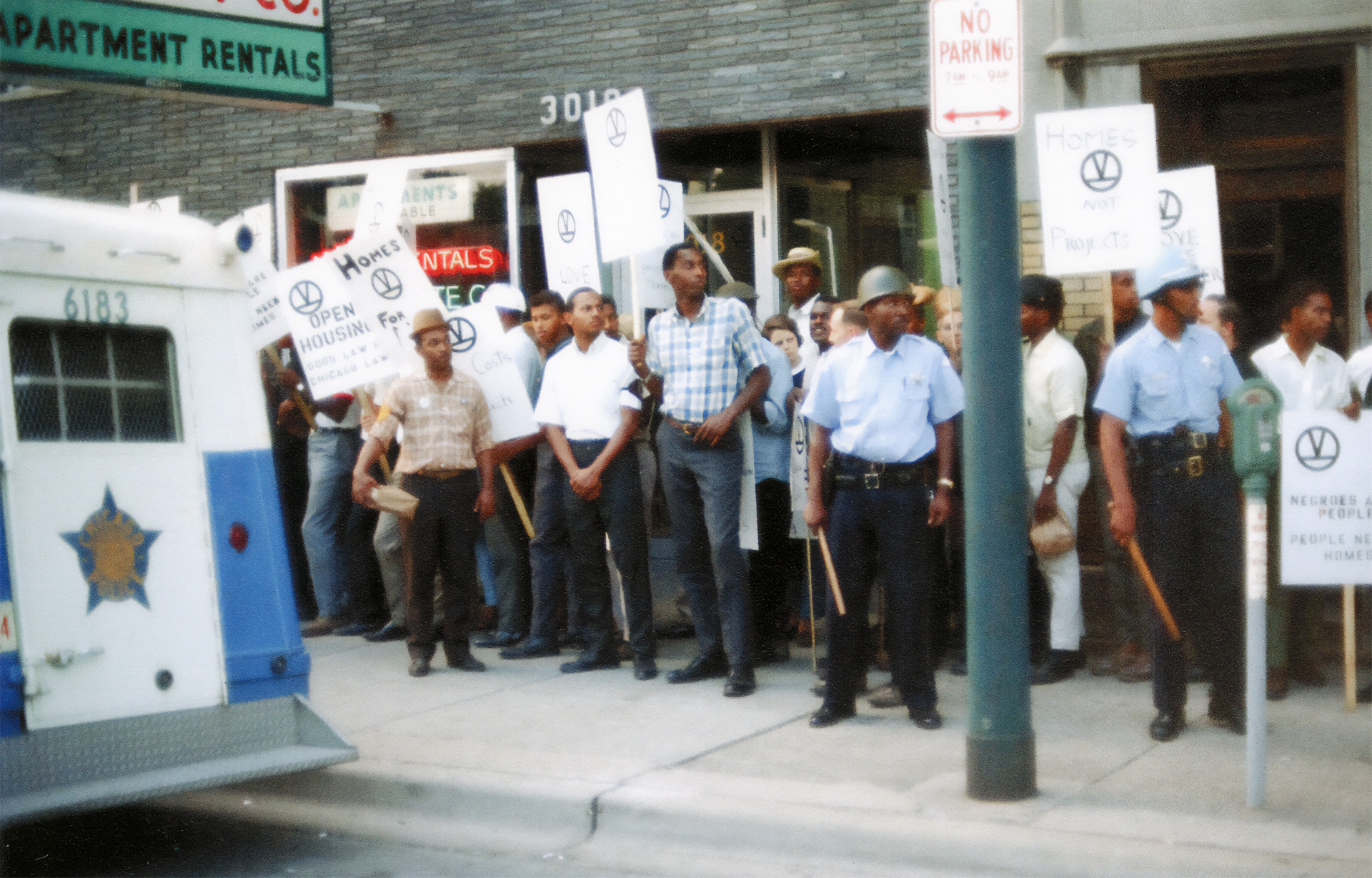

Protests at Chicago real estate offices were a common part of the Chicago Freedom Movement. The signs feature the "End the Slums" emblem that appeared on many materials during these protests.
Courtesy of Bernard Kleina
After tragic conflicts, Americans targeted by discrimination often formed organizations to use their collective power for advocacy. The National Association for the Advancement of Colored People (NAACP) formed in 1908, after White mobs terrorized Black neighborhoods in Springfield, Illinois, reacting to a false accusation of assault. Fighting surged for two days, leaving 16 people dead, dozens of homes burned down, and 40 Black families unhoused. In response, concerned White citizens and Black leaders like W.E.B. DuBois, Ida B. Wells-Barnett, and Mary Church Terrell met in New York City and launched the NAACP. The organization set political and educational goals to protect rights guaranteed by the Constitution’s 13th,13th Amendment: The 13th Amendment to the US Constitution abolished slavery and involuntary servitude except as punishment for a crime. 14th,14th Amendment: The 14th Amendment to the US Constitution granted newly emancipated Black Americans citizenship as well as equal protection under the law. These legal and civil rights did not equally apply to women until the passage of the 19th Amendment. and 15th Amendments.15th Amendment: The 15th Amendment to the US Constitution ensures voting rights to citizens of the United States regardless of “race, color, or previous condition of servitude.” National voting rights did not extend to women until passage of the 19th Amendment, but even this amendment did not immediately change restrictive voting practices employed against women of color. By 1919, the NAACP had more than 300 local branches and 90,000 members.
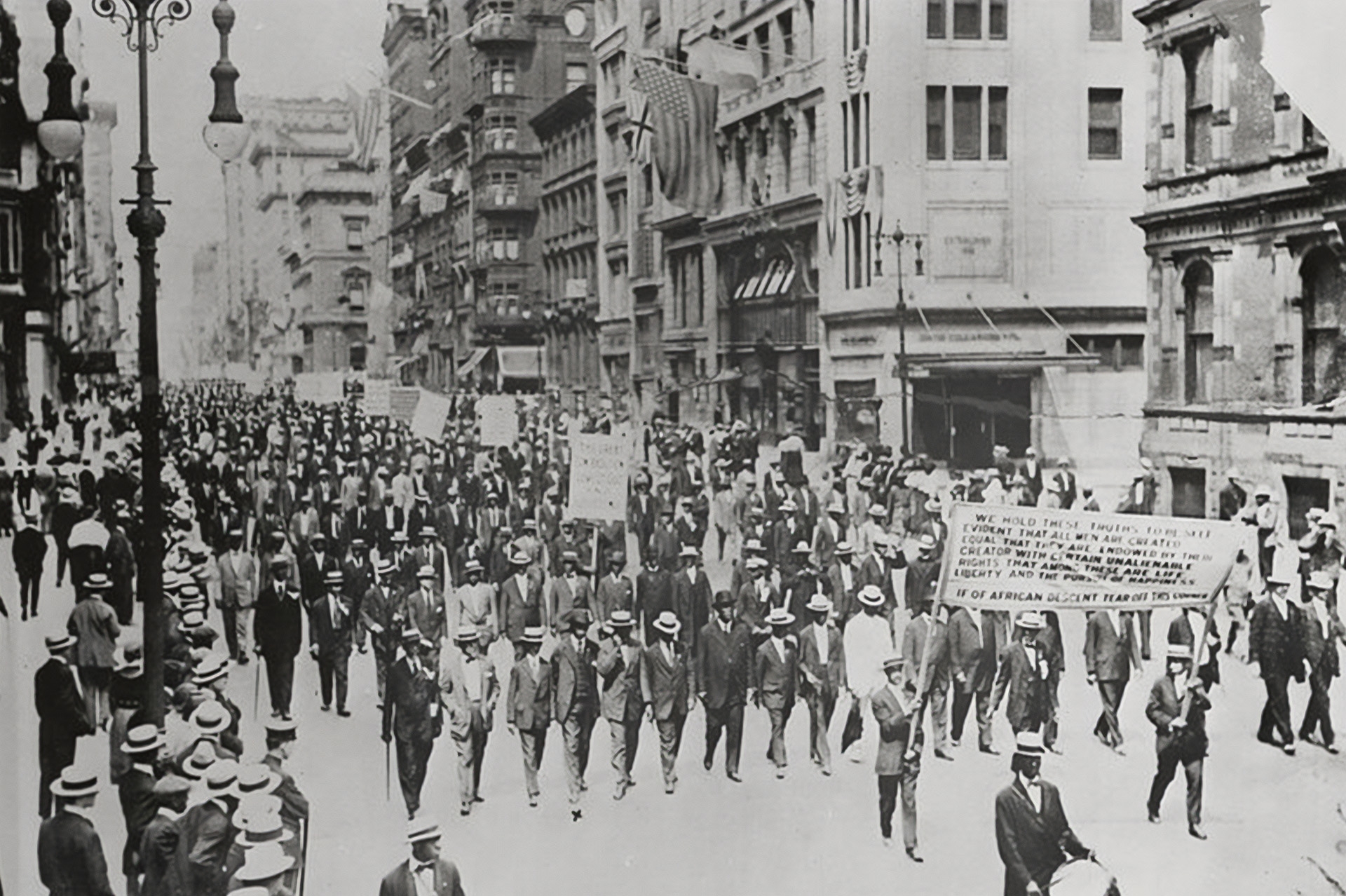

On July 28, 1917, several thousand Black men, women, and children silently walked down Fifth Avenue in New York City in protest of lynchings and the recent East St. Louis riots. The Silent Parade was organized by the NAACP (National Association for the Advancement of Colored People) and increased the group’s visibility.
Courtesy of the Library of Congress
In 1915, the Anti-Defamation League (ADL) formed after the lynching of Leo Frank, a Jewish man convicted of murder in an unfair trial. Recognizing the role of anti-Semitism in this and other incidents, the ADL formed to fight discrimination with legal strategy, education, and protest. The ADL contributed to legal challenges against housing discrimination and joined in Northern and Midwestern marches for open housing (commonly known as fair housing today) in the 1960s.
Supporters of the Chicago Freedom Movement helped push through The Civil Rights Act of 1968, also known as the Fair Housing Act.
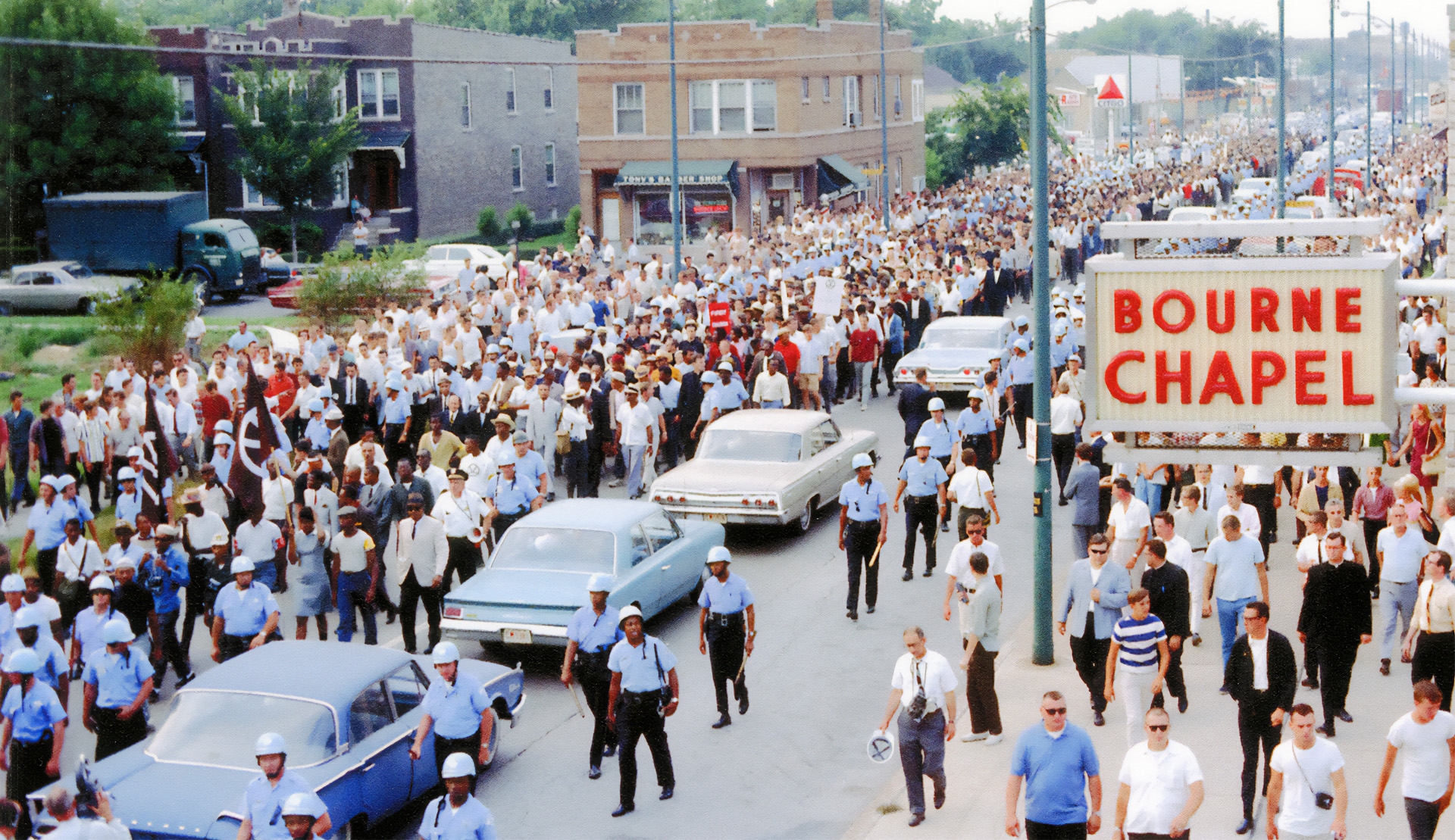
August 5, 1966 Chicago Freedom March down South Kedzie Avenue.
Courtesy of Bernard Kleina
On the West Coast, after decades of violence, intimidation, and legal discrimination, Japanese Americans formed the Japanese American Citizens League in 1927. They advocated for access to citizenship for Japanese Americans and an end to laws that prevented them from owning homes and land.
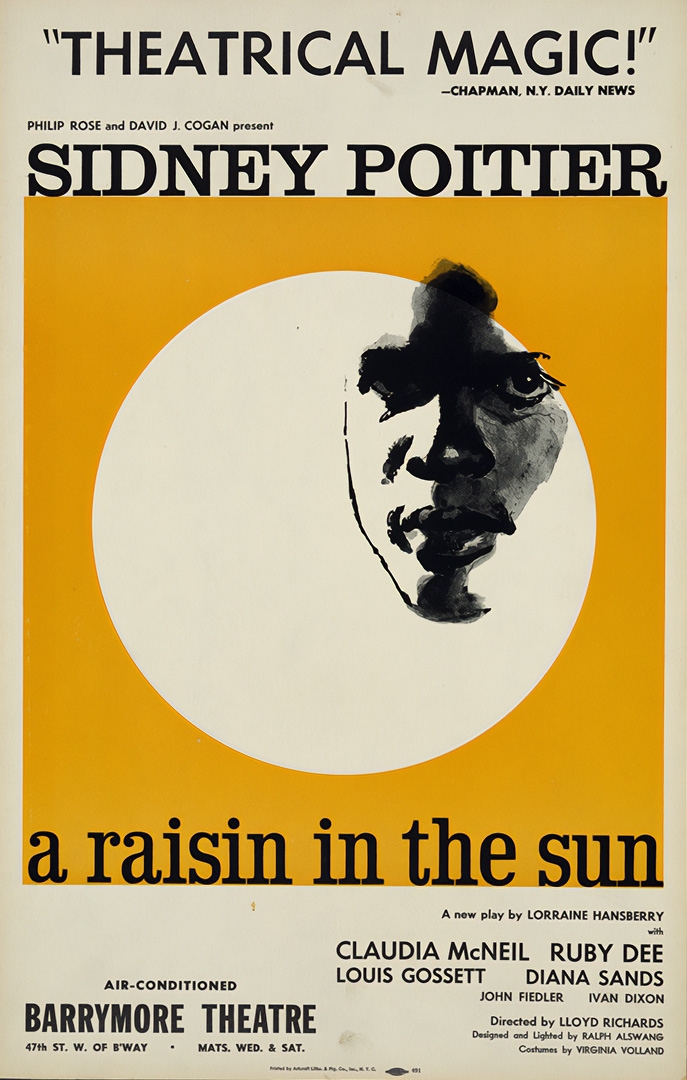

One of the most important plays in the history of American theater, 1959's A Raisin in the Sun tells the story of three generations of the Younger family and their divergent dreams. The play’s title refers to a line in Langston Hughes’s poem “Harlem.”
Courtesy of the Library of Congress
These groups and many more shared an interest in fair housing. Together and separately, they began identifying racist housing practices and challenging them in court. Restrictive covenants were one of the first targets. In 1937, Carl Hansberry, a Black real estate developer, purchased a racially restricted house in Chicago’s Woodlawn neighborhood. Despite threats of violence from White neighbors, the Hansberry family moved in. The Woodlawn Property Association sued them for breach of covenant. The NAACP appealed the case to the U.S. Supreme Court. A narrow verdict allowed the Hansberrys to keep their home (but did so without ending restrictive covenants). Carl’s daughter, playwright Lorraine Hansberry, captured the story in her 1959 play, A Raisin in the Sun.
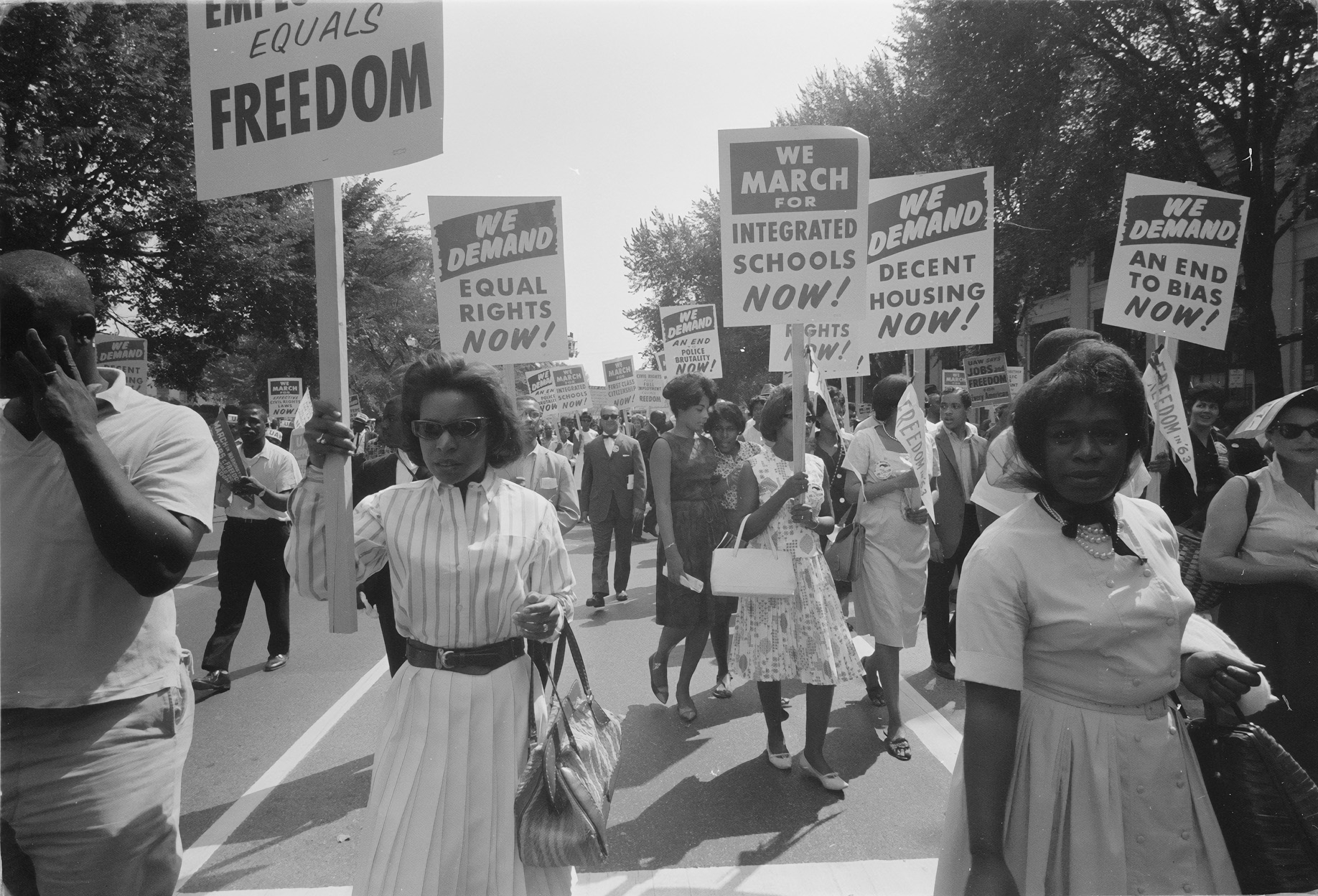

At the 1963 March on Washington for Jobs and Freedom protestors carry signs demanding decent housing, integrated schools, civil rights, freedom, and an end to bias.
Courtesy of the Library of Congress
In the South, acts of civil disobedience, protest marches, boycotts, and lawsuits slowly dismantled the Jim Crow regime. In 1954, civil rights activists won a major victory when Brown v. Board of Education rejected the “separate but equal” standard. It was clear that separating people by race only made inequality worse. The Civil Rights Act of 1964Civil Rights Act, 1964: A Congressional Act that prohibits discrimination on the basis of race, color, sex, religion, national origin, and later sexual orientation or gender identity. and Voting Rights Act of 1965Voting Rights Act, 1965: A Congressional act that outlawed discriminatory and restrictive voting rules which developed after the Civil War and targeted Black Americans, other minorities, and poor voters. The act also empowered the Justice Department to directly register voters in districts where voters experienced discrimination. brought new federal protections on voting rights, and outlawed discrimination in public accommodations and schools. By 1965, the focus turned to the North where housing discrimination and ghetto conditions persisted.
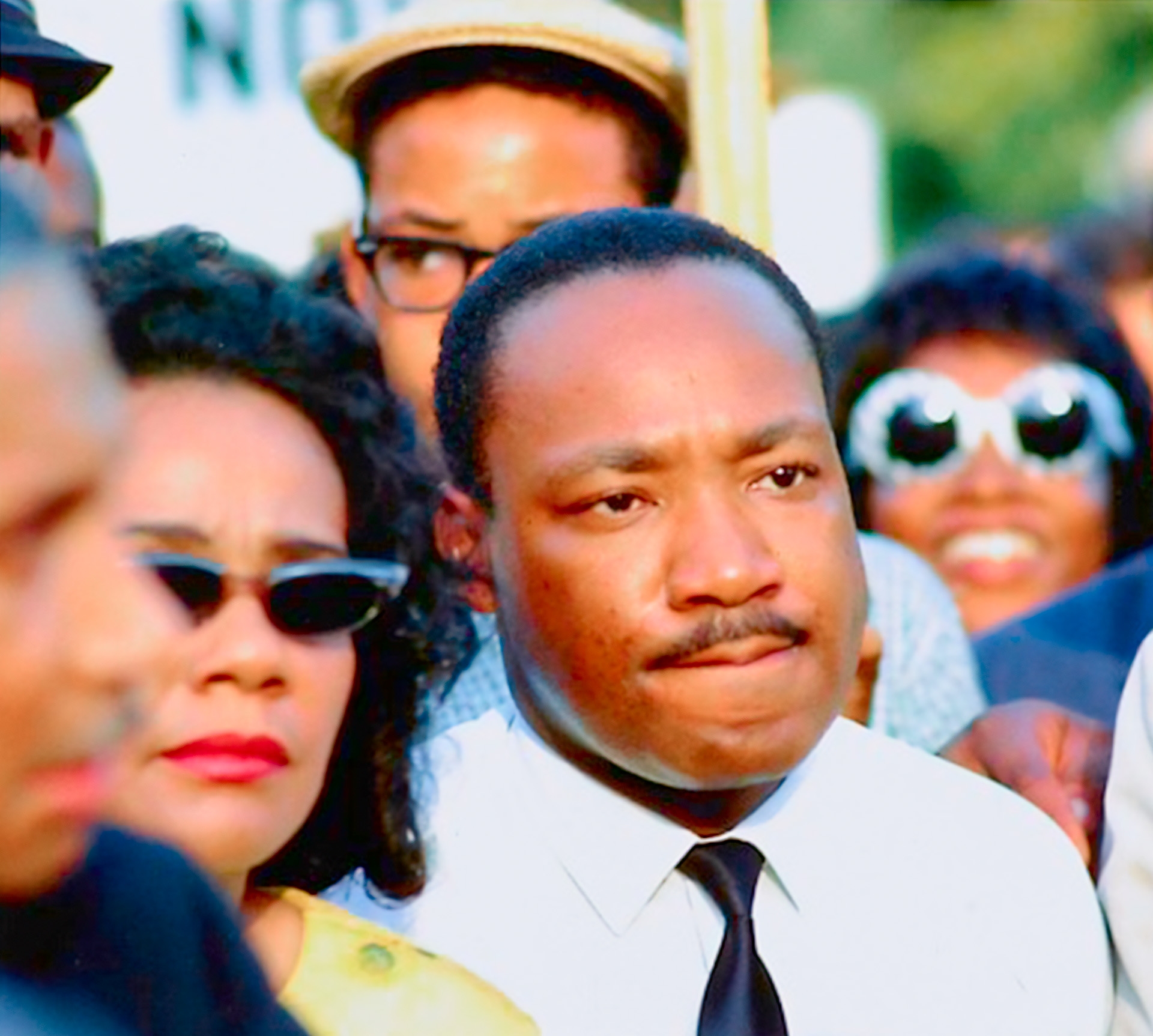

Dr. Martin Luther King, Jr. and Coretta Scott King at the "Freedom Sunday" rally held on June 10, 1966. Dr. King addressed 30,000 people at Soldier Field in Chicago, Illinois.
Courtesy of Bernard Kleina
In Chicago, one of the nation’s most racially segregated cities, leaders of the Chicago Freedom Movement invited Dr. Martin Luther King, Jr. to join their efforts. In 1966, Dr. King moved with his family to Chicago’s West Side to campaign for fair housing and job opportunities. During an open housing march in Marquette Park, White Chicagoans threw bottles and bricks, hitting King with a rock. On Freedom Sunday (July 10, 1966), King spoke to 30,000 people at Soldier Field. Thanks to the defeat of Jim Crow, he said, the South was bursting with new democracy, but “the Negro in the north [is] increasingly pressed down by the cruel weight of vicious and discriminatory forces.” King called out issues like mortgage loan denial, substandard housing, exploitive rents, and real estate profiteering. Supporters of the Chicago Freedom Movement helped push through The Civil Rights Act of 1968, also known as the Fair Housing Act.Fair Housing Act (Civil Rights Act of 1968): A Congressional Act that protects people from discrimination based on race, color, national origin, sex, religion, disability, and familial status when renting or buying property or applying for a mortgage.


President Lyndon B. Johnson at the signing of the Voting Rights Act of 1965 with Dr. Martin Luther King, Jr., Clarence Mitchell, and Patricia Roberts Harris.
Courtesy of the LBJ Presidential Library
The Fair Housing Act was the last major piece of legislation in the mid-twentieth century Civil Rights Movement. The bill had long been stalled in Congress, but fears of unrest after the assassination of Dr. King in 1968 spurred legislators into action. This Act prohibited discrimination in the sale or rental of a dwelling unit based on race, color, religion, or national origin. In 1974, an amendment added sex to the protected categories, and in 1988 another amendment prevented discrimination based on physical disability or familial status.
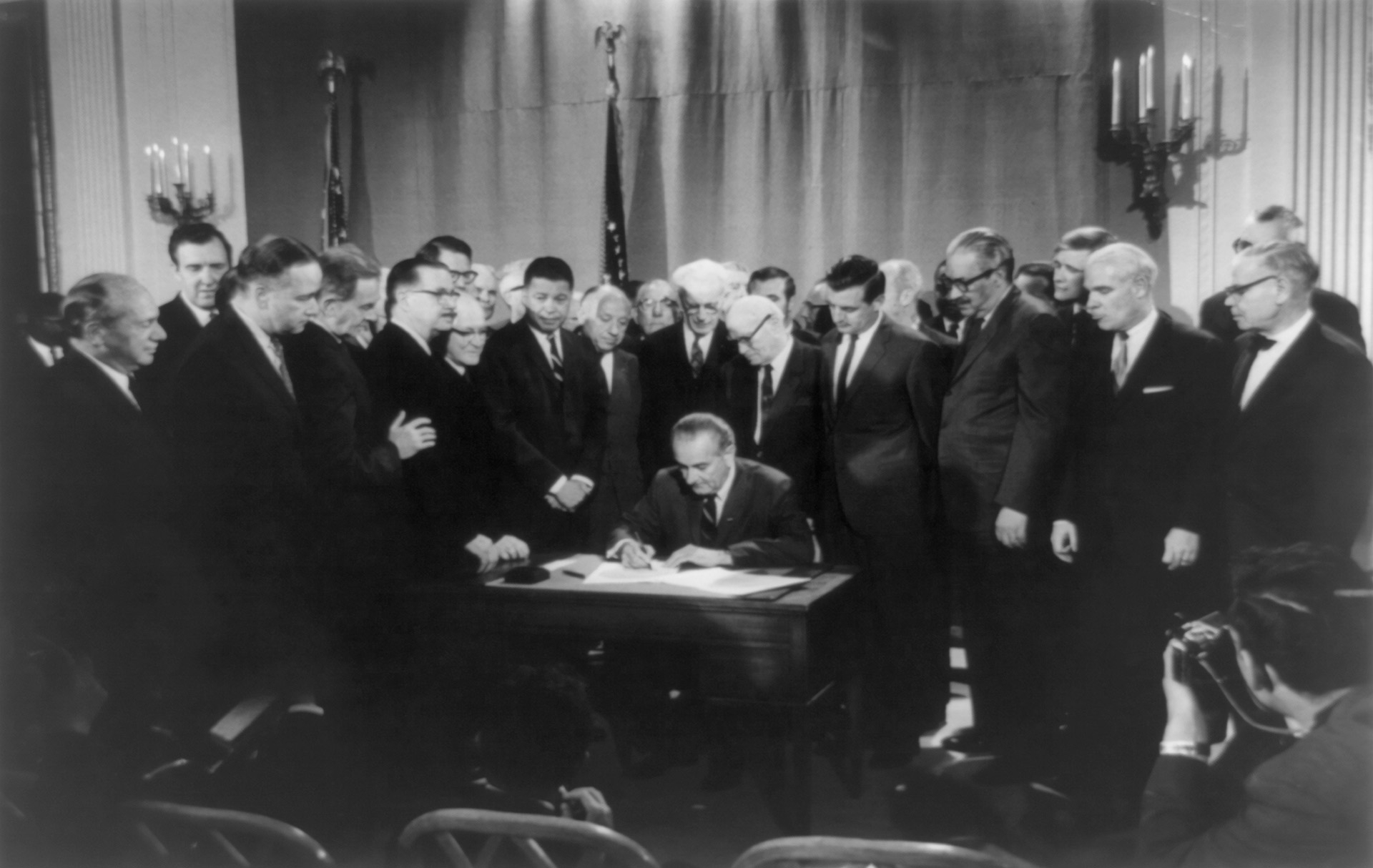

Congress had considered fair housing during 1966-1967, only to have it locked in contentious debate. On April 5, the day after Dr. Martin Luther King, Jr.’s assassination, President Lyndon B. Johnson sent a letter to the Speaker of the House asking to bring him the legislation which Johnson signed on April 11, 1968.
Courtesy of the Library of Congress
To enforce its policies, Congress set up the Office of Fair Housing and Equal Opportunity within the U.S. Department of Housing and Urban Development. The Fair Housing Act was both a major victory for the Civil Rights Movement, and a result of compromise by office-holders eager to move on from the turbulence of the 1960s.
